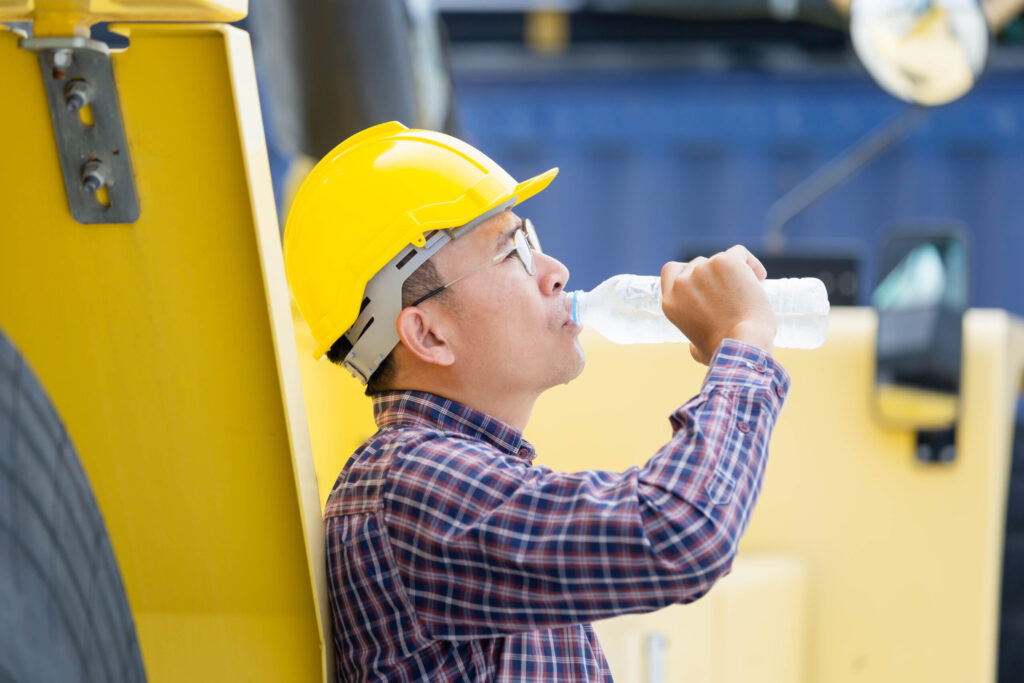OSHA Continues its National Emphasis Program for Heat

As the one-year anniversary of OSHA launching its National Emphasis Program (NEP) for Heat approaches, it is important to revisit some key takeaways.
The program was launched April 8, 2022, and is in effect for three years. It is OSHA’s intent to publish a permanent Heat Rule. The NEP applies to both outdoor work environments such as construction job sites and indoor work environments that are not temperature control such as manufacturing operations or warehouses.
Regardless of if the work area is outside or inside, employers are responsible for having a heat safety plan that contain the following items:
Ensure their employees are acclimatized to working in the heat. The NIOSH provides guidance on how to safely get workers acclimated to the heat.
Monitoring their work areas. Employers should be checking in with their employees throughout the workday, adjusting work activities and provide adequate breaks in shaded areas as needed. OSHA / NIOSH have created a free phone app (both for android and apple) that provides a “real-time” heat index and projects the heat index for the next 12 hours.
Ensure their employees are staying hydrated. Employers are required to provide cool drinking water for their employees. Mixed electrolyte supplements can be added to water but should be used in moderation. Certain sports drinks, soft drinks or any drink that contain high contents of sugar should be avoided.
Conduct employee training that includes the importance of why and how to stay hydrated, know the signs and symptoms of a heat related illness and know what to do if there is a medical emergency.
OSHA established Directive CP 03-00-024 for their CSHOs (Compliance Safety and Health Officers) that outlines how their CSHOs are to conduct inspections involving Heat. This directive uses the National Weather Service categories to classify heat indices starting at 80⁰F. If the National Weather Service has issued a warning, alert or advisory, CSHOs are directed to make Heat the first and primary safety concern addressed in their inspection.
The “proper” amount of water an employee should drink directly depends on the heat index and type of work they are conducting. Various government sources recommend that employees drink 1 – 1 ½ quarts per hour and not to exceed 12 quarts per day. Another excellent source of water to help employees stay hydrated are fruits such as grapes, watermelon, or apples. Bananas are a great source of potassium to help prevent muscle cramps.
If the employer is using sub-constructors, the employer should ensure (via through their contract) that their subcontractors are monitoring their employees and providing them with water and adequate rest. If the employer is using temporary workers who are under their direct supervision, the employer is responsible for their safety by providing training, cool water and monitoring their work activities.
States that have their own state safety programs are required to adopt this NEP. States such as California, Washington and Minnesota already have Heat Plans in effect.
The dangers of Heat Exposure are not exclusive to the work world. There are many non-work-related activities such biking, hiking or yard work that require proper hydration. The same precautions used at the job site can be use at home to help prevent heat expose.
Contact INSURICA for more safety tips.
Sources:
National Emphasis Program – Outdoor and Indoor Heat-Related Hazards, Federal OSHA
NIOSH publication 2017-124
Criteria for a Recommended Standard Occupational Exposure to Heat and Hot Environments, NIOSH
TB MED 507 Heat Stress Control and Heat Casualty Management, U.S. Army







